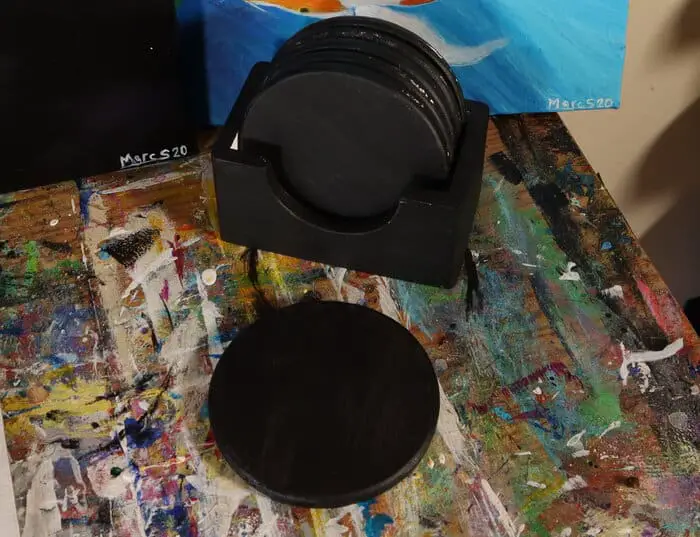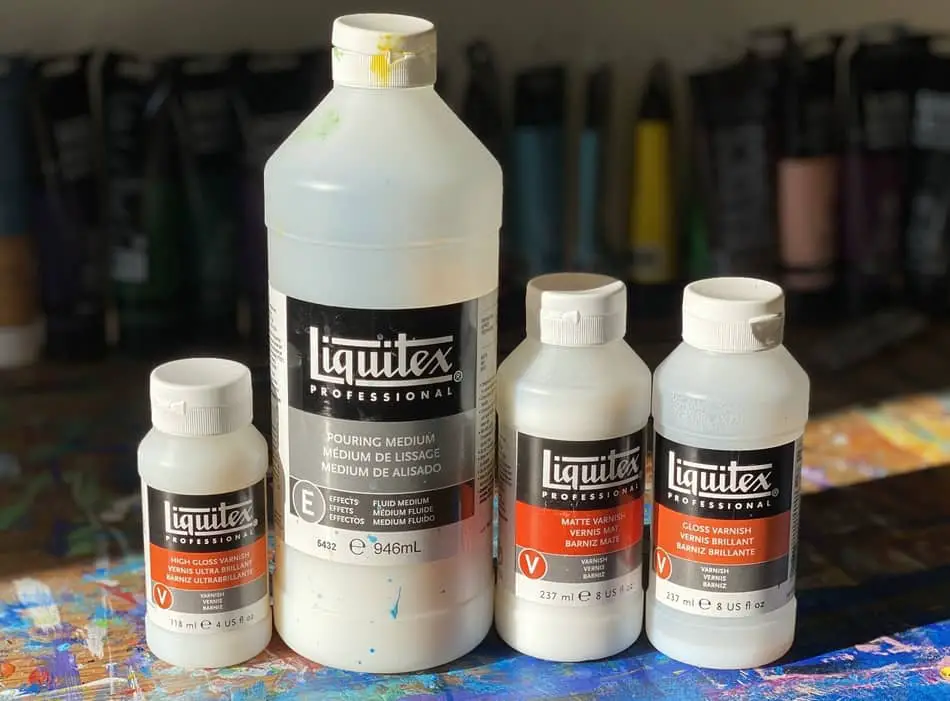
As my collection of paintings has begun to grow I have started to notice that some of my paintings don’t look as good as they used to.
This has me wondering what are acrylic paint sealers and when should we be using them? Acrylic paint sealers are used for two basic things, to help seal the surface you are going to paint on or the finished painting itself. They create a protective barrier while providing you with higher quality results.
There are a variety of surfaces you may want to paint on that will require some sort of sealer to ensure that the paint will stick to it.
Not only that but there are a number of reasons you will want to start sealing your finished paintings as well as a number of different results you might get depending on the sealer that you use.
What Acrylic Paint Can Sealers Do For You
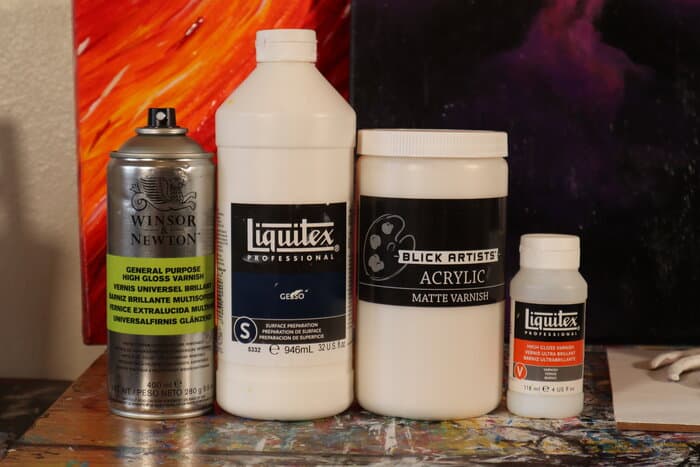
The good news is that we call them sealers because that is exactly what they do. They seal things in. They create a barrier of protection.
In canvas painting, you can use a sealer on the surface of your canvas to help create a surface that allows for your paint to spread more easily.
This protective barrier on the canvas will prevent the canvas from absorbing your paint as much. This then allows for better spreading of your paint across the canvas.
Most canvas comes pre-primed though so this usually isn’t something that you would need to do. For more information on canvasses check out this page!
Perhaps you don’t want the textured canvas look to your painting. A few layers of some gesso can help you get the smoother finish you’re looking for.
Maybe you actually want MORE texture. You can actually use gesso for adding more texture to your canvas too! There are other types of mediums one can use for this purpose as well.
There are a number of surfaces you might want to paint on that will require a sealer to be painted on. Things like wood, glass, or even rocks can all be painted on when properly prepped.
For more details on how to use acrylic paint on wood check out this article I wrote on it here!
Alternatively, when you finish your painting you may notice that the paint loses a bit of its luster once it dries. Maybe you don’t like the flat look of the colors you are getting.
There are a variety of glosses and varnishes that one can use to seal their painting. This will not only help the colors remain vibrant but it will also give your paintings what’s commonly called archival quality.
They will increase the lifespan of your painting while helping to make it easier to clean the dust off of them. They also provide protection from UV damage and moisture too!
Helping to prevent your painting from yellowing with age. Heck, there are even varnishes you can use to give your painting a yellow and aged look too!
Gloss and high gloss sealers give your painting a reflective shine to it. A satin varnish will also give you a finish with a bit of a shine but much less noticeable than those of the gloss finishes.
Satin is more like an eggshell type of finish.
If you’re not looking for your painting to have any sort of glare or reflective properties you can still protect it with a matte varnish. This one is like nothing is even there and is meant purely for the preservation of the painting.
Related Articles:
- Canvas for Acrylic Painting: The Beginners Quick Reference Guide
- Paper For Acrylic Painting (A CHEAP Alternative to Canvas!)
- Wood For Acrylic Painting: The Products You’re Looking For
- 6 Acrylic Paint Sets With Brushes (Paint Sets To Get You Started!)
- What Can You Use Acrylic Paint On? 13 Surfaces To Paint On!
How Gesso Can Be Used As a Sealer
When you want to seal the surface you are working on this type of sealer is commonly referred to as primer or gesso. It’s not technically a sealer like varnishes are but it does help to seal surfaces for the purposes of painting.
There are way too many kinds of gesso to cover in a small brief section but it is basically a type of paint primer that can give a particular surface or object tooth for the paint to adhere to. The vast majority of them come in white but you can always add your own tint by mixing in some paint with your gesso as well.
If you don’t feel like mixing your own colors in you can find gesso that comes in a variety of colors and grades.
Well…there are basically two grades they come in. Professional grade and student grade.
The main differences I can see between them are pricing and the amount that you’re purchasing. As an example, you can get a gallon for student grade gesso for about $25 while a gallon of professional grade gesso is around $45.
Depending on the brand you can buy anything from 8 ounces to gallons of the stuff. I will have to purchase both student grade and professional grade gesso sometime so we can test them out and see what the difference are in the results.
Once you have some gesso on hand you’ll be ready to paint on everything! Well, almost everything.
Let’s take a look at what surfaces require an acrylic paint sealer next. While you can apply it to a lot of different types of surfaces there are a couple you will want to avoid.
Surfaces That Require Acrylic Paint Sealer
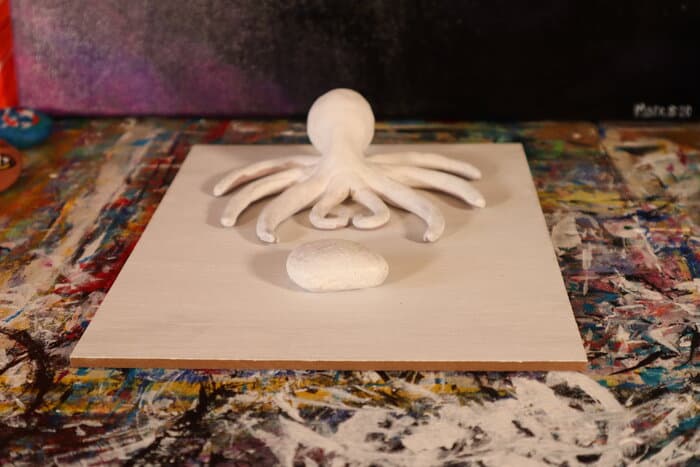
What else can we start painting on once you have gallons of this stuff on hand?
I know there are wood panels and hardwood options available that certainly will require a primer. Some people also like to get wood slices or medallions.
Pretty much anything made of wood really.
Rock painting is pretty popular too. I certainly have painted my fair share of rocks and you can get the best results by applying several layers of gesso first.
Once you have some around lots of options become available. Do you have a tabletop or a dresser you want to spruce up with a bit of color?
No problem! Hit it with some gesso and paint your heart out!
Even some types of metals are fair game. They basically need to be metals that don’t contain iron.
So anything aluminum would be great! I can think of a lot of cans and other aluminum products that normally would be thrown out that could potentially be turned into artwork using a bit of gesso to seal the surface!
If you have some other metal object that you want to paint on but are not sure what it’s made of, any oil-based primer will work just fine for your needs. Something like Rust-Oleum would be what you would want to go with.
You don’t really want to use gesso or primers for fabrics though. There are other mediums and products for that if you did want to use your acrylic paints on fabric.
Acrylic paint is too stiff for that sort of flexibility and primers don’t typically help with that.
It’s not typically needed on glass but you certainly can use it on it if you’d like to create some texture or something like that.
For more details on 13 different surfaces you can use acrylic paint on check out this article here!
Types of Varnishes
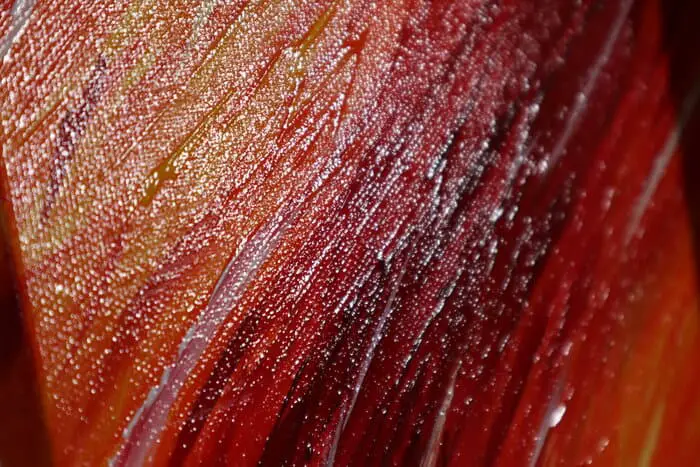
When it comes to varnishes to choose from we have already discussed the differences between matte, satin, and gloss finishes but what other qualities are there to varnishes we can buy?
There are some differences in how varnishes are applied. Some are applied using a varnish brush or sponge brush while others come in an aerosol spray can.
Beyond that, they come in a variety of options for some of the desired effects one might be looking for.
There are antiquing varnishes used to make your painting look aged. These can add a yellow tint or even cracks to your painting.
Then there are conversation varnishes. These are meant purely to protect your painting against effects like what antique varnishes cost. They will prevent fading and yellowing over time.
Next are restoration varnishes that help restore a fading painting to its original luster. These are meant to help eliminate a yellow tint and restore color.
Sort of makes me wonder what would happen if you hit a painting with an antique varnish and then a restoration varnish… Do they cancel each other out and make it like no varnish was applied?
There are also differences in what the varnishes are made of and for. Damar varnishes are made for finishing oil paintings.
Resin-based varnishes and polymer-based varnishes specifically used to finish acrylic paintings.
Resin-based varnishes are toxic so if this is what you are using be sure to be outside or in a well-ventilated area of your home. They also will require a special solvent to clean as well.
Luckily we have a non toxic option in our polymer based varnishes. Plus they are easily cleaned with water too.
Now that you know what an acrylic paint sealer and how to use it go grab what you need and get painting!

